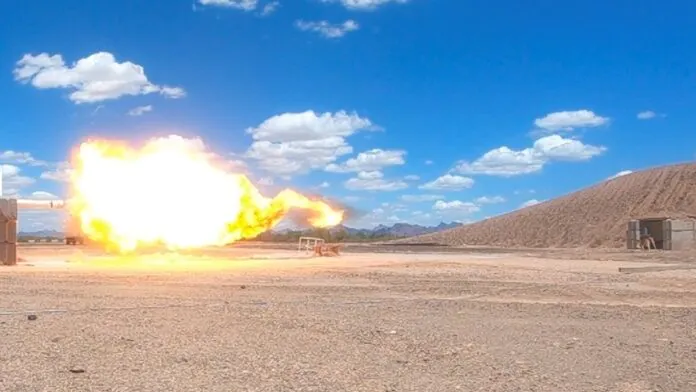© ROOT-NATION.com - Use of content is permitted with a backlink.
Missiles are expensive, sophisticated, harmful to the environment and sometimes prone to explosion, so alternative launch technologies are emerging to reduce their use. The wonderful kinetic launch system SpinLaunch, which spins the rocket to incredible speeds at the end of a long arm made of carbon fiber in a vacuum chamber, and then releases it into the sky at speeds up to Mach 6.
But another company has challenged it to show a much simpler approach, which it says allows it to pull launch vehicles and strong electronic cargo off the ground at speeds almost three times faster and with faster turnaround time. This is essentially a huge gas cannon.

Green Launch COO and Chief Science officer Dr. John W. Hunter directed the Super High Altitude Research Project (SHARP) program at the Lawrence Livermore National Laboratory some 30 years ago, and in the process led the development of the world’s largest and most powerful “hydrogen impulse launcher.”

In essence, it is a long tube filled with hydrogen, which is mixed with helium and oxygen, with a projectile in front of it. When this gas cannon fires, the gases expand very quickly, and the projectile gets a huge kick. As part of the SHARP program, a 122 m long pulse launcher was built and tested in 1992, breaking all railgun-style electric launcher records in terms of energy and speed and starting payloads (including hypersonic jet engines) with an initial speed of Mach 9.

This approach, says Green Launch Business Development Director Eric Robinson, scales up far better than a spinning accelerator like the SpinLaunch system. «”The record for a projectile launched with hydrogen propellant is 11.2 km/sec (Mach 32.7),” he tells us in an email. “We plan to limit our launch velocity to 6 km/sec (Mach 17.5) to extend reusability and prevent wear on the barrel.”

As with the SpinLaunch system, the GreenLaunch projectile needs to launch a small second-stage rocket to provide the final acceleration and direct it to the desired orbit. But because the hydrogen cannon will launch much faster, this rocket can be much smaller and lighter.

The hydrogen cannon can be fired every 60-90 minutes, sending its hypersonic projectile skyward where it’ll “penetrate the atmosphere within a minute and shed its aeroshell.” Low earth orbits between 300-1,000 km (186-621 miles) can be achieved in under two hours, and some much quicker. “Your satellites and supplies can be in orbit in 10 minutes,” says Robinson.Later this year, the team aims to ramp up the velocity enough to get a projectile to cross the Karman Line, 100 km (62 miles) above the Earth, and enter into what’s referred to as the beginning of space.
You can also help Ukraine fight with Russian occupants via Savelife or via an official page of the National Bank of Ukraine.
Read also:
- NASA’s new telescope will look for extraterrestrial organics
- MIT has created a robot to treat stroke patients


